World of Warships isn’t your typical MMO. Where most massively-multiplayer online games firmly plant themselves in the worlds of fantasy or science-fiction, Wargaming’s World of Warships puts players in more realistic scenarios revolving around the harrowing naval battles of World War I and World War II.
Striking a fine balance between fun and historical authenticity, where many of the game’s ships are “authentic down to the rivet”, Wargaming has spent hundreds of hours researching and developing the ships and maps that comprise the oceans of World of Warships.
We recently sat down with Trevor Smith, Wargaming’s Community Manager, to talk about how the company got into the free-to-play online scene, how the team infuses World of Warships‘ gameplay with strategy and authenticity, how real-world ships and operations influence the development process of World of Warships, and how Wargaming is preserving history through charity events, such as their current Battleship Texas in-game event. 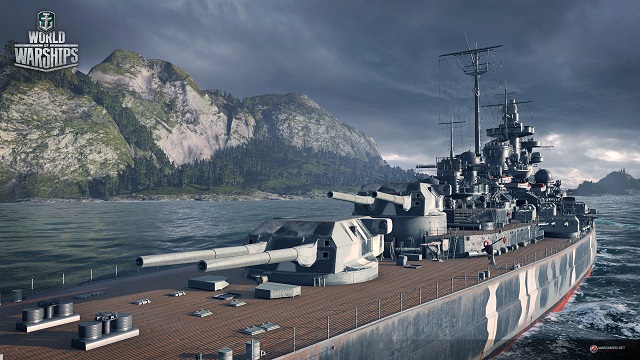
GameSkinny: Wargaming’s been around for a while now — almost 20 years. As a company that has roots in the turn-based and real-time strategy genres, how did the company get into the free-to-play online scene?
Trevor Smith, Community Manager, World of Warships: So, Victor Kislyi [CEO of Wargaming] was part of the original game group where he and a couple of his friends were making video games in a really small sense. Their initial idea was, ‘Hey, we should make a game we can easily access with all of our friends. Something we can all have fun with.’
Kislyi has come out and said that he loved the concept of chess and military strategy games, and he thought it would be sweet to make a game of chess but with tanks — and basically make it super impressive and amazing. And with those sort of small ideas and the historical background they had as a culture — with World War II tank battles and that sort of thing — that was where they started, where they went through and a lot of tinkering went on. Then World of Tanks and the free-to-play genre that followed it sort of was born.
GS: World of Tanks released around the same time that the free-to-play genre sort of took off it, didn’t it?
TS: In my impression, I would agree so. Maybe not so much for the mobile market, because there were some mobile games floating around at that point that were free or low-barrier to entry. But for the PC market, that’s one of the first few games that I remember being as high quality as it was.
Anecdotally, I didn’t start at Wargaming and then learn about World of Tanks. I was actually playing World of Tanks before joining Wargaming. I had been playing for over a year and had gotten super deep into the community and went from a manufacturing job to working with a video game company. Which is fantastic.
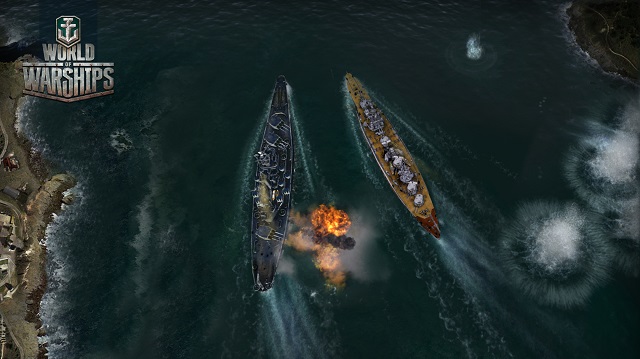
GS: Playing off of that, there’s quite a bit of strategy and tactical awareness that goes into playing World of Tanks and World of Warplanes. And that’s also true in World of Warships. However, the speed at which World of Warships plays out is inherently slower because of how true-to-life naval warfare also unfolds. How does Wargaming’s history in strategy subgenres fit into the game’s original and ongoing development processes?
TS: So, the concept of World of Warships being a slower, more strategic game — I don’t know is 100% intentional on our part. You’re right, it is a naval combat game, and naval combat is slower and takes place over greater distances. It’s all very impressive in its scale. The distances you can fire with a single naval cannon are insane — you can fire something like 20 miles. So having the compression of space [found in Tanks] just isn’t really doable. When you look at World of Tanks, for example, you’re talking about a map that’s maybe a kilometer square. Now, when you’re looking at World of Warships, you’re talking about maybe 20 kilometers square. So it’s huge.
I think that the development process and making it strategic are a focus of our map design, as well as the different ways we build out new and interesting flavors for ships. I would say that the different types of abilities the ships have inside their own classes — such as a cruiser being sort of a jack of all trades and the Royal Navy cruisers maybe being special because they have the ability to use a smoke generator — makes them have this little tactical flare so that you can use them and support your team in special ways.
GS: You touched on something there with the map design, I think. What is the process of looking at the maps you currently have and how they’re set up and developing new maps that employ new strategies? What is that development process like?
TS: I know our map team looks at it in a way that goes from a very rough cut, where you have the idea of, ‘Here are some islands. Here’s something else. And here’s a general aesthetic for it. Where do you polish it? Where do you put the individual spawns for ships? And how do you make this a space that will be good for certain capture points? Is it a two-base sort of thing where you capture the enemy base? Or is it domination mode, and it has to be in flux over the entire match?’.
So it’s really about how we want to influence the style of gameplay in that specific map. Do we want it to be more aggressive? Do we want it to be a sneakier, stealthier, pokey kind of way? It’s not a snipey type of thing — because the ships that already do that will keep doing that — but for the shorter-range ships that have to go through a lot of water, certain maps can be rough.
And from a historical standpoint, a lot of people ask why we don’t have more historical accuracy in this game, and we always have to refer them to the fact that a majority of naval combat happened in the open ocean. And we have a map that’s just open ocean — and that map is supremely boring to play. So there’s a lot of gameplay aesthetic being put into [World of Warships] as opposed to historical aesthetic.
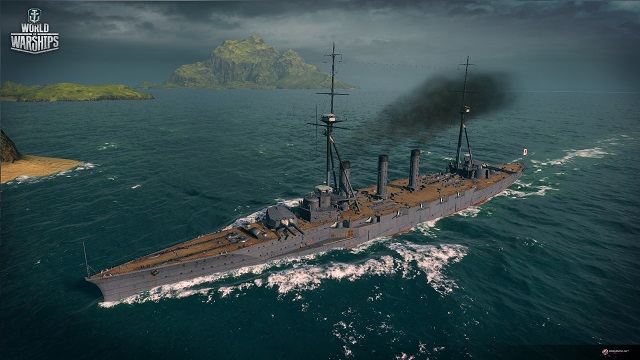
GS: I was actually going to ask if the team ever took a historical battle and built a map around it. But since most of those battles happened in the open ocean …
TS: Yeah, what would you do? Color the water differently? (laughs) Yeah, ocean while kind of stormy …
Now we do have some, like Okinawa, which has that historical feel to it, and it’s loosely based on that section of the Pacific Ocean, but not all of it is conducive to plopping down a square map on a gameplay surface. So we do our best to try and marry both when we say this is going to be pseudo-historic.
GS: And there are a lot of other factors, too, such as aircraft and aircraft carriers, that may not always translate as well into — I won’t say an arcadey deathmatch — but a typical deathmatch scenario.
TS: I think arcade style is a pretty fair statement. We do have an arcadey feel. It’s not 100% simulation. That would be boring as all get out. Not just for the maps, but when you consider taking a ship from full stop to full steam, it takes something like 30 minutes. So there’s no way you would want to sit through that.
GS: So we’ve talked a little bit about historical authenticity already, which can be seen in World of Warships for sure. Obviously, getting it right is a big deal when you’re able to incorporate it. Can you talk a little about the research process behind the ships themselves and how that ties into balancing ships and developing things like Commander Skills?
TS: Sure. We have a very delicate balance we need to strike. We want to be as authentic as possible, while also being fun to play. Sometimes that can be really rough. A great example is when we were talking about Royal Navy cruisers. To fit into a tech tree, the existing, already-made ships were actually very similar, but the differences between technologies in those ships were leaps and bounds. So it’s hard to knock out a 1-through-10 ranking system that makes sense in the rest of the game. So, there are times when we have to go and find particular ships that may have only been concepts but fit into the tech trees.
For the most part, however, our development teams — the guys who make the actual ships — visit different Navy offices and ships (if they exist) and use all of the photos and blueprints they can to knock together a ship that is as accurate as they can possibly make it. A lot of those ships are actually accurate down to the rivet … you have to understand what year you’re picking the ship from and then how you’re going to make it fit into the game with that specific loadout.
A great example is the U.S.S. Kidd. She’s currently in a very WWII setup, but she was modified by removing some torpedoes and adding AA guns because aircraft were doing terrible things to ships at that point. So in the game, she’s missing a set of torpedo tubes that a Fletcher-class ship should have. So the other Fletchers [in World of Warships] are a little bit more powerful. By removing those torpedoes, we’re able to sort of downclass the U.S.S. Kidd and make it a more acceptable ship in the tier she was put in. So a lot of that goes into balancing and getting ships in the game.
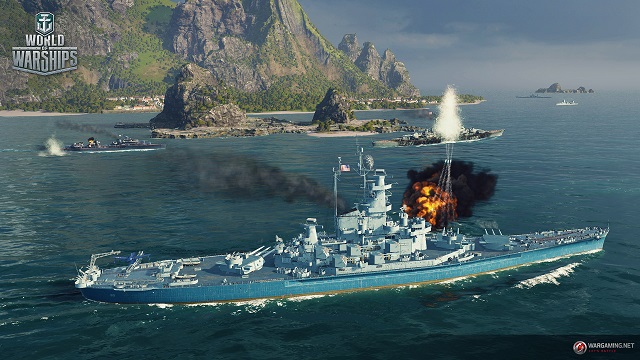
GS: What I like about World of Warships is looking at the ships and saying, ‘These are authentic ships.’ And it’s a testament to your R&D because none of the ships really feel overpowered, especially considering these ships are over different timelines. How long do you playtest ships when balancing them?
TS: A lot of times it depends on how close our initial developments are. With ships, the developers knock together a basic idea of a ship: HP, Damage, Rate of Fire, etc. They then go through a QA process internally, and once the ships start functioning in game — i.e. they don’t crash, for example — they hand the ships over to our group of volunteer super testers … and those super testers put the ships through their paces.
We then parse feedback through a lot of different people — we read through all of it. We have not just the NA region, but EU, Asia, and RU all doing this testing, and then based upon all that feedback, we might make some small tweaks. But then we put it on the live servers to test it even further, again with the super testers and some of our contributors, the guys who make videos for us, just to see how it performs in a live setting.
We study all the statistics from the servers: how it’s doing in terms of damage, in terms of survival rate, all of that sort of thing. The amount of information we have on our ships’ performances is really quite astounding … there are a myriad of changes we can make that affect how good a ship is. And then after we make all those changes and we feel really comfortable with the ship, that’s when it gets released.
GS: How do you go about determining what ships are premium ships?
TS: Usually, that determination would work with an interesting ship that may or may not fit a line. Usually, it won’t fit a line because it’s just not good enough or it doesn’t quite meet the characteristics we’re trying to add to a line of ships. Then we determine the best thing we can do for that ship is turn it into a premium ship.
For example, we don’t currently have any Italian battleships in the game as a line, but we have Roma coming out soon [which would be a premium ship]. All of our lines are named after the lead ships. So you have the Cleveland class, the Farragut class, the Fletcher class … those are all ships in their respective lines that you can grind to. Speaking of Fletcher specifically, the U.S.S. Kidd is a ship you can spend some real money on getting, and it’s slightly different than the Fletcher you would [grind] to in the game.
Conversely, there are also ships that totally don’t fit at all, and we distribute them in different ways. The U.S.S. Missouri is an Iowa class, but she’s not different from the Iowa itself, which is a Tier IX ship, and we don’t sell Tier IX premiums. So we decided that we’d give this premium ship away for free, but you would have to grind to it using free experience, which is one of our in-game currencies.
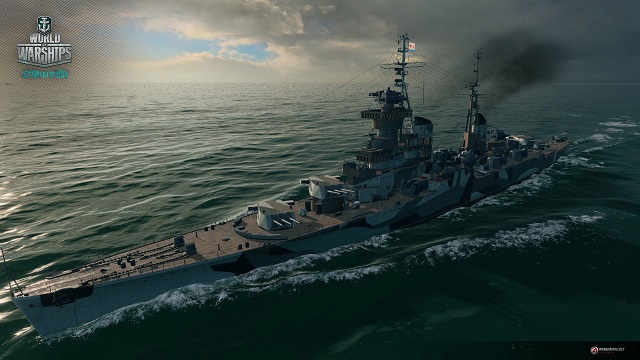
GS: Al King has talked about Wargaming’s relationship with tank museums for World of Tanks and that Wargaming’s Lesta Studio in St. Petersburg, Russia, overlooks the Neva river, where historic warships can be found. Can you talk a little about Wargaming’s relationships with maritime museums or community historical societies and how they might tie into World of Warships?
TS: That’s actually one of the things we’re working on almost all the time. The U.S.S. Kidd is a great example. We actually just created some community videos on our channels that basically bring awareness to the fact that the ship exists and is a real thing you can visit. Our ship team that did all the measurements for the U.S.S. Kidd actually went out to Baton Rouge, Louisiana, and the museum to take pictures of everything. They documented that ship from stern to bow.
But one thing that we’re working on right now that’s really big is the Battleship Texas Foundation. Battleship Texas is not in good shape. She’s actually sinking — and water has to be pumped out every day. She is the last Dreadnought in the world. So Battleship Texas out in Houston is in a really rough way and needs a lot of help, a lot of monetary and PR help.
So we recently launched our Project Valor Campaign, where we created bundles in our premium shop that ranged from $5 to $30, and 100% of those proceeds went to Battleship Texas. When we first launched the campaign in November, a lot of people from EU, Asia, and RU found out and [wanted to help]. Overall, we raised over $280,000 for Battleship Texas.
Outside of charity work, we make a lot of video series that look at the history of ships and the actions they’ve partaken in. Because Wargaming definitely sees themselves — ourselves — as shepherds of history … those men’s lives and women’s lives deserve to be remembered.
GS: You talked a little about this already, but backing up just a bit, the battleships, cruisers, aircraft carriers, and frigates in WoWs are all ships from the WWI and WWII eras. Why focus on that period of naval warfare and not, say, the modern era or perhaps the Napoleonic era?
TS: I can only speak to this from a personal standpoint. Napoleonic naval combat would be great, except the problem is those ships move very, very slow, and those encounters occurred very close to each other. Plus, a lot of times you’re going to be dealing more with boarding than you are firing. That’s an entirely different game to play. We don’t have boarding aspects. Would that be a cool game? Absolutely. But is World of Warships that game? I don’t think it was ever intended to be that game.
Conversely, with modern warships, so much is accomplished now by an aircraft carrier or missile boats — there are no operational battleships anymore. Your navy is mostly comprised of aircraft carriers and destroyers. Having big, dramatic hunks-of-steel warships — that’s just not a thing anymore. So being in the modern era, I don’t know if it would really appeal to a lot of different individuals because a lot of your battles are being fought at such great distances.
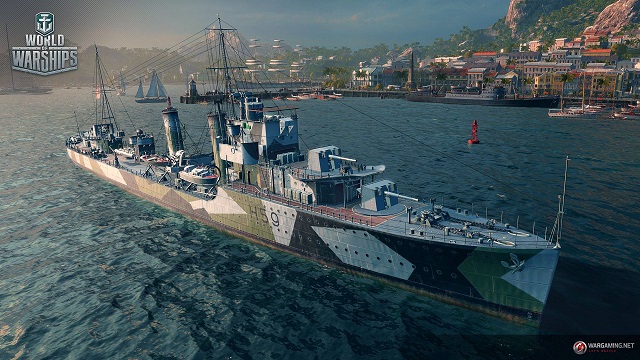
GS: Over the summer, Wargaming released update 0.6.8 for World of Warships, with much of the content revolving around Operation Dynamo and the harrowing rescue at Dunkirk during the Second World War. What goes into pulling something like that off from an R&D perspective? What differentiates it from other in-game operations, such as Operation Ultimate Frontier, for example?
TS: Operation Dynamo was made with the express intent of working alongside the movie Dunkirk. We were releasing content with Warner Bros.’ blessing, getting information from them, and of course, doing our own research as well. In terms of the creation of that and the R&D, that was a true undertaking. It differentiates from the other operations because a lot of things we did [with Operation Dynamo] didn’t exist in [World of Warships] before Operation Dynamo.
For example, the concept of a minefield was just alien. It only exists in that operation, but it’s something we could use in other operations as well. The little Schnellboots from Germany, those don’t exist in the game. We work with nothing smaller than a destroyer. So having those designed and designing how they interact is very interesting — specifically leading up all the different A.I. questions. It was a tremendous amount of effort to make that new and exciting thing you could turn into a gamified version of Dunkirk, which has a very serious undertone.
How does this differ from other operations? This one differs in that it got a specific collection, a group of items that get added to your player account, which are basically like trophies and achievements you get for completing certain matches. Those collections had historical items from that era — and a lot of historical information attached to them.
It was intricate and deep, but also very good for us. Using those various technologies and those inferences, they influenced a lot of the operations we have now. For the most part, we can take those learnings and systems and copy/paste them into the ones we have, which will make them better.
GS: America and Japan were the first two nations in World of Warships. How did the development and research teams decide on those two nations? What about their historic fleets led to that focus?
TS: From what I remember [about that time in Warships‘ history], Wargaming and Lesta Studio wanted to work on a game that would be a little bit more popular and geared toward American naval historians. And for Americans, we think of the War of the Pacific more than the War of the Atlantic. Having ship-to-ship interactions with, for example, Germany — Americans remember more of the war with the Japanese in terms of naval engagement.
Plus, the Japanese had the most well-known battleship ever, the Yamato. It was the biggest, baddest battleship … If you were releasing a naval combat game, you would definitely release Yamato as soon as you possibly could.
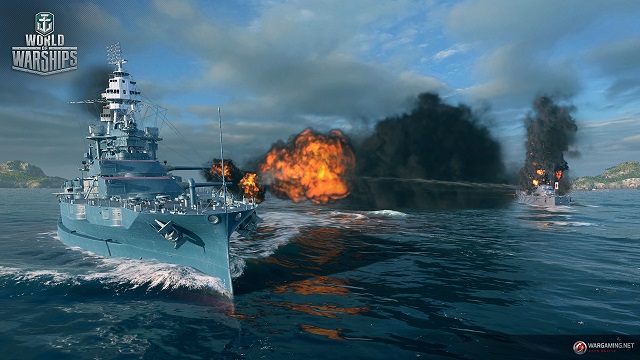
GS: Can you talk about your upcoming initiative with the Battleship Texas Foundation?
TS: Today, December 11, we’re launching a new initiative that goes through April 1, 2018. In this initiative, you can refer a friend and get them to Tier VI in any line, and for every account that does that, we’re going to donate $25 to the Battleship Texas Foundation. That’s going to be something where we don’t ask players to contribute any money at all — we just want them to find someone new and get them into the game.
—
Rounding out Wargaming’s trifecta of historically based MMO titles, World of Warships is poised to continue its domination of the seven seas by providing both maritime enthusiasts and casual players some of the most realistic yet fun naval combat in modern gaming. And through Wargaming’s charity efforts, the company is one of the few in the gaming sphere that’s taking action to preserve some of the most iconic pieces of history the world has ever seen.
You can pilot some of the most fearsome battleships, cruisers, destroyers, and aircraft carriers of WWI and WWII by checking out World of Warships on Steam or over at Wargaming.net.

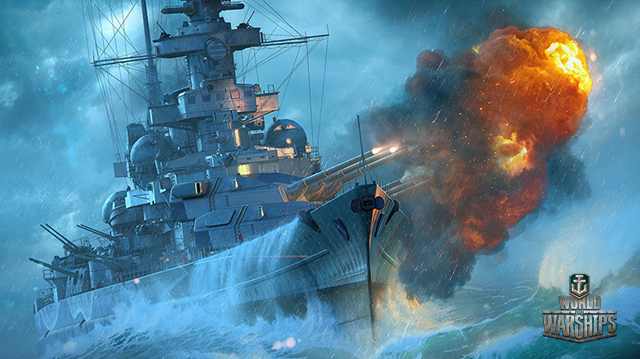





Published: Dec 13, 2017 12:40 pm